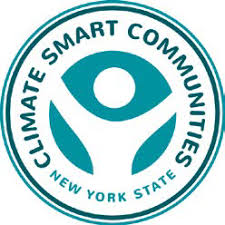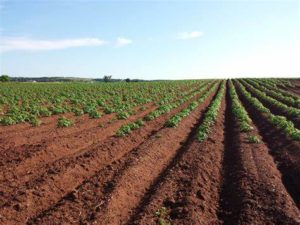Description
The development of agriculture during the past centuries and particularly in recent decades has entailed depletion of substantive soil carbon stocks. Agricultural soils are among the planet’s largest reservoirs of carbon and hold potential for expanded carbon sequestration (CS), and thus provide a prospective way of mitigating the increasing atmospheric concentration of CO2. At the same time, this process provides other important benefits for soil, crop and environment quality, prevention of erosion and desertification and for the enhancement of biodiversity. Land degradation does not only reduce crop yields but often reduces the carbon content of agro-ecosystems, and may reduce biodiversity. Water retention, soil’s microbial health, and soil’s capacity to resist disease are improved with natural fertilizers derived from food scraps compost. Municipalities can encourage sequestration of carbon in soil through the following actions:
- Expanded education and outreach
- Encourage sustainable agricultural practices such as crop rotations, over cropping, tillage, manure and compost addition, conversion to perennial grasses and legumes, rewetting organic soils. Consider financial incentives to farmers to compensate them for additional costs and/or risks.
- Support home, town and commercial composting.
- Encourage turf/lawn management practices that increase carbon sequestration. Decrease turf, pesticide, and commercial fertilizer use, increase use of native flowers, shrubs, plants, add long-lived, large variety trees, reduce use of gas powered tools
- Encourage local golf courses to use ecologically friendly practices.

Implementation Phases
This action could be fully implemented today.
Challenges
Deliberate action and clear advice on how to enhance carbon capture and sequestration in the soil ecosystem is necessary in order to get wide acceptance by practitioners and policy makers alike. In order to facilitate this, expertise in the form of successful practitioners or policymakers with experience in seeing the co-benefits for soils, and surrounding areas, of practices that support carbon capture/sequestration. For agricultural lands, without support, the responsibility and cost falls to landowners to learn and apply techniques, such as cover cropping, conservation tillage, and changes in manure use/application. And best practices for golf courses and other large turf/grass monocultures that we would like to keep in a sustainable environment must also be identified and integrated into land management.
Example Municipalities
Several municipalities have already implemented this action…
- The state of Maryland passed legislation creating a Healthy Soils program which provides farmers with education, technical assistance, and financial incentives to implement farm management practices that contribute to healthy soils, for biodiversity and soil sequestration.
- Hawaii signed House Bill 2182 into law which created a Greenhouse Gas Sequestration Taskforce which seeks to identify ways to store carbon in its farms and its natural areas such as its many forests
- The city of Burlington, Vermont, as part of its Climate Action Plan, intends to store and sequester more carbon with additional forest and tree coverage
Greenhouse Gas (GHG) Reductions
Data not available.

Climate Smart Communities (CSC) & Clean Energy Communities (CEC) Link
No direct counterpart exists for this action in the CSC and CEC frameworks.

Co-benefits
There are multiple co-benefits to completing this action, including:
- Supports biodiversity.
- Avoided soil erosion.
- Increase disease resistance.
- Enhanced water retention.
- Avoided use of pesticides.
Resources
https://onetreepledge.org/energy-usage-math/
http://www.fao.org/soils-portal/soil-management/soil-carbon-sequestration/en/
https://kisstheground.com/
https://climatenexus.org/climate-issues/food/soil-carbon-storage/
https://www.fastcompany.com/90439526/how-boulder-is-creating-a-path-for-cities-to-scale-up-carbon-sequestratio



